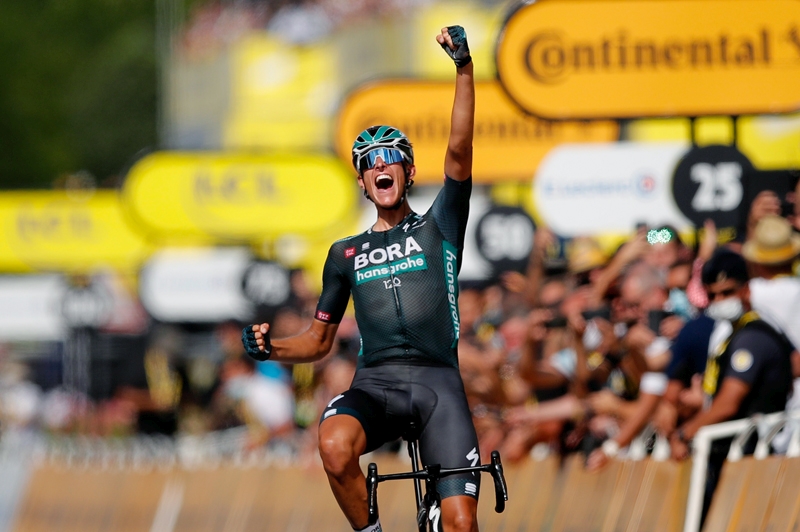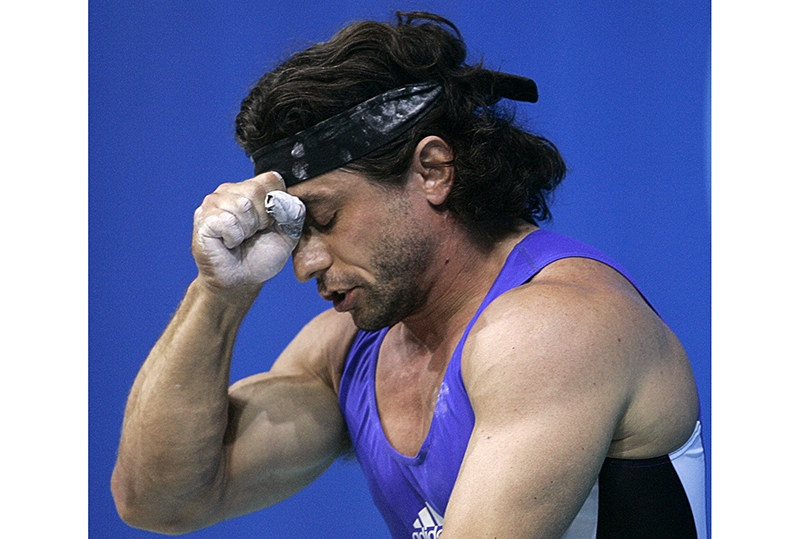Article at a glance
- Encourages mental preparation prior to speed sessions to ensure high-quality performances
- Argues that performance can be improved by working harder and working smarter
- Shows that reflection and analysis are vital to improvement
- Suggests that learning to control self-talk can help manage unwanted negative emotions
What is speed training?
Speed training is all about trying to go faster. In terms of how fast should you run, this is relative. There are multiple different ways in which you could answer this question, but the most logical one is that you need to be working at close to, or faster than, the speed you want to produce in competition. For example, if your goal is to run a sub-three-hour marathon, then running repetitions at sub-6:45 min/sec pace is speed training. If your goal is to run sub-40 minutes for 10km, then speed training starts when you run 15 km per hour or faster. Therefore, although the actual speed changes in relation to your level of ability, distance of event and the time you have set as a goal, the psychological state required is about answering the question “how do I go fast?”
Speed training should help bring about physiological and biomechanical adaptations necessary to go faster (1). As an athlete adapts, he/ she should become more efficient, and this should mean he/she can produce the same performance but for fewer physiological demands. This should create the headroom for future improvements (2). In the present article, I look at psychological factors related to speed training, and propose ways in which athletes can convert physiological and biomechanical potential into improvement.
What should I work on?
To start to answer this question, you should assess your current level of performance. You are looking to make a number of small changes to parts of your performance and to do this you need to look at the process of performing fast; ask yourself the question, “How do I go faster?” One approach to use is to train harder, aim to run faster, and set goals in training that focus what you are doing. This should lead to an improvement in performance, but many athletes I work with already do many of these things. They will have various indicators of demonstrating training and performing at a relatively high intensity, and so the suggestion that they could improve performance by training harder might not offer much hope.
The other approach to follow is to look at training smarter, and focus on changing aspects of technique. You can do this by writing “qualities of the elite performer for a specific event”; for example, the 10km. To do this it helps to think of an athlete who best represents what an ideal performance might look like. You might identify Mo Farah as someone very close to the ideal 10km runner. Start simply by considering the question, “What does this person do well in his/her performance?” and don’t spend too long thinking about it, just start writing what comes into your mind. There are no right or wrong answers as such, as what you are trying to do is identify what qualities you believe underpin performance and the act of writing these down is a way of uncovering your beliefs (3). Of course, you might change your mind about what these qualities are. The act of revising what is written is evidence that you are reflecting deeply on your beliefs and also possibly your knowledge (3).
After identifying qualities that influence performance, you rate how good an elite athlete is on each quality on a 1 to 10 scale, where 1 is very poor and 10 is very good. After doing this, you should then rate yourself on the same qualities using the 1-10 scale. An important part to this process is to give an explanation to justify the score you have given. It’s easy to overrate yourself. It is also possible to be overly self-critical. Furthermore, it’s possible to give estimates of your ability that you later decide were incorrect. When someone does this exercise for the first time, he or she may not know just how good they are at a specific quality. This is why it is worth reflecting on why you gave the score and writing down your reasons. This exercise forms part of a way of learning how to build a program that works for you and, therefore, when you re-examine progress in a few weeks, you will have an accurate record of your thoughts when you started.
After doing this exercise, you subtract the difference between the elite performer and your own score. This helps identify where the biggest differences are, and helps identify qualities of performance to work on. However, a problem with this technique is that many athletes find making comparisons between themselves and super-elite performers as unrealistic. Therefore, it helps to identify someone who is slightly better than you, a club competitor or rival in a race and repeat the process. As Table 1 indicates, an athlete has compared herself against two different people.
Table 1.
Your beliefs are important!
For many experienced athletes, beliefs on the qualities needed to deliver peak performance are strong (4). Research has indicated that athletes’ beliefs have a powerful impact on performance. To suggest an intervention that goes against beliefs can lead to that intervention failing. This has occurred with athletes where the link between the intervention and improved performance has been demonstrated (4). In a study on runners, we found that athletes who believed that goal-setting would help manage emotions improved significantly more than athletes who believed the intervention would not work (5). The key message is that people can make the best developed interventions fail if they are determined to do so. Therefore, uncovering and identifying your beliefs is a worthwhile exercise to do.
So how do I improve on the key qualities?
The next stage is to develop a training program. The usual way an athlete might think about this question is to set time-based goals (5,6); for example, run 400m in sub-60 seconds or run a 400m X number of seconds faster. This type of goal certainly targets something to aim for, but it should be established in conjunction with setting a skill-based goal. I will focus on psychological skills training and try to integrate this into physical training.
1. Get the image of performing successfully in your mind.
Imagery is proposed to be effective because it reinforces the neurological pathways associated with actual movement (7). Imagery can be used at several times before performance and is suitable for use in both competition and training(6). Imagery can be done in conjunction with doing something else, and it is sometimes preferable to do it that way. There are many opportunities, though. You can conduct imagery on the journey to competition, or during a warm-up whilst the individual is holding a stretch. Combining imagery with stretching can be a helpful way of ensuring you hold the stretch for a certain number of seconds. For example, you could imagine running the first 45 seconds of a race to ensure that you see yourself following your plan which also means you held the stretch for the time you planned (6, 7).
2. Develop a series of self-statements that remind of you of what you need to do.
Research findings indicate that using self-talk helps people perform better (8). There is some dispute over which type of self-talk should be used with a convincing case for either motivational (I can do this) and instructional (focus on relaxing your arms) self-talk being able to be made. There is also some debate as to whether self-talk needs to be positive. Some evidence suggests that engaging in negative self-talk serves to act as a warning signal in advance of poor performance, and so it raises motivation to avoid such an outcome. However, there is more support for positive self-talk; self-talk that tells you what you want to do, what you want to be thinking about and how you want to feel. In terms of the debate between instructional and motivational self-talk, it is worth noting that there are large individual and situational differences.
In terms of how this evidence might apply to an individual, then the guiding message is about identifying which motivational strategy works for you. When you start using self-talk, use both motivational and instructional self-talk and then reflect on what was helpful and why you thought so. Most likely, you will find that both instructional and motivational work but in different situations, and in time, and experience, you will know what self-talk works for you and when.
3. Use imagery and self-talk to manage negative thoughts and feelings.
It’s easy to set goals when sitting on the sofa and create the idea that you can make rapid improvements. The reality is often very different. The positivity experienced on the sofa is replaced by negativity. For example, consider how you felt during an intense training session before the penultimate repetition where thoughts and feelings that you cannot go on invaded your mind. This experience is quite normal when doing intense exercise. Pain is an evolutionary mechanism designed to protect the organism. It is hardwired and, therefore, difficult to change; you will experience sensations of pain and thoughts and emotions that come with this when they are triggered, but how you interpret these is trainable. It’s worth remembering that a goal of training is to create adaptation and to extend your current physical limits.
The first thing to do is accept that pain and discomfort are part of the journey. Just like you expect to sweat when you run when performing in the heat, you should expect to feel pain when you exercise near maximal. This sounds obvious, but it is an important stage in the process. The nature of pain and the evolutionary framework it sits within indicates that when performing maximally, physiological cues dominate. It is hard to think of anything else than physiological symptoms, and the message is telling you to address these with a strong encouragement to slow down. You should accept that this will occur and that interventions will focus on what you are doing rather than trying to ignore the pain or distract yourself.
However, with speed training your strategy needs to be focused on maintaining or increasing speed. The idea is that you associate with what you are doing so that you increase efficiency. The strategies you identified in Table 1 need to be recalled into your mindset as not only reminders of what good performance should feel like, but also as a strategy to shield against inner states (10). When conducting imagery, also imagine performing when feeling tired and think about these negative thoughts and feelings, and decide your strategy. For example, if the plan is to focus on the rhythm of your running, when you feel very tired, counting a rhythm in your mind is a way of sticking to this plan.
Summary
Your approach should be the first step when starting on a programme to get faster. In this article, I have argued that it is not simply a case of trying to go harder, but trying to work smarter. I have also suggested that working smarter means learning how to push yourself further. Getting a clear idea of what it will look and feel like to move faster and what an ideal or near perfect performance is like will give you something to aim toward. Once you have identified which parts of performance to work on, strategies such as imagery and self-talk can be used to control inner psychological states. You should accept that fast performance and maximal performance is likely to hurt and use strategies such as imagery and selftalk to help to cope with pain. I suggest focusing on what you are doing will be the most effective and to use an if-then(10) format to help remind you to use the strategy at the point when it’s needed.
Andy Lane is Sport Psychology Professor, University of Wolverhampton, UK.
References
1. Sports Medicine 1986; 3, 346-356.
2. Sports Medicine 2004; 34, 465-485.
3. Sport and Exercise Psychology: Topics in Applied Psychology, London; Hodder Education, 2008, 91-108.
4. Sport and Exercise Psychology: Topics in Applied Psychology, London; Hodder Education, 2008, 209-226.
5. The Sport and Exercise Scientist 2011; 29: 14-15. www.bases.org.uk/BASESExpert- Statements
6. International Journal of Sport and Exercise Psychology 2012; 10; 159- 171
7. Journal of Motor Behavior 2008; 40, 433- 446.
8. Journal of Sport & Exercise Psychology 2011, 33, 666-687.
9. Human Nature 1990; 3, 261-289 10. Journal of Experimental Social Psychology 2010; 46, 505–514.









